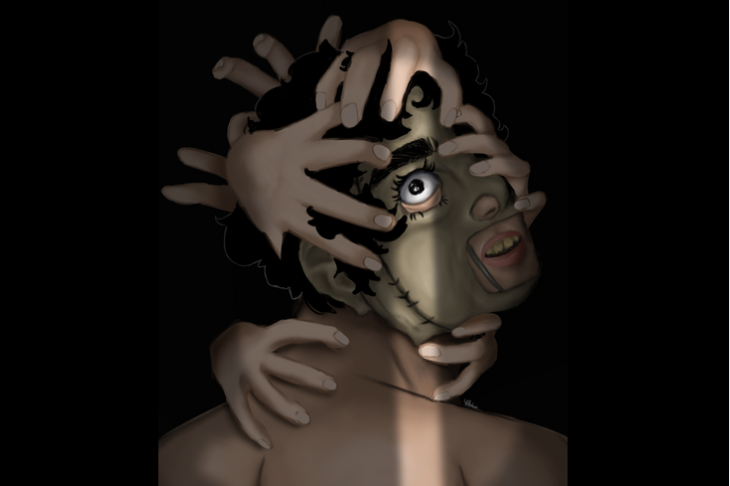When depicted in film, war is commonly romanticized and glamorized. The most common perspective shown in war films is the perspective of soldiers representing a country—even more so as the “winner” or “loser.” However, is war really as it seems in the movies? What about the perspective of the citizens of war-torn countries; the victims of collateral damage.
“Come and See” is a Soviet anti-war film directed by Elem Klimov released in July 1985. The film is based on the 1971 novel “Khatyn” by Ales Adamovich and the 1977 collection of survivor testimonies, “I Am from the Fiery Village.” Set in 1943 during WWII and Germany’s occupation in Belarus, a 13-year-old Belarusian boy named Flyora Gaishu—played by Aleksei Kravchenko—digs up an abandoned rifle. The next day, Soviet partisans arrive at his home to draft him, much against his mothers wishes. Flyora joins the forces, arriving in a suit noticeably larger than him, highlighting his naïvity and child-like nature.

As they interact, Glasha expresses a desire to love and have children. Flyora fakes maturity, and she taunts him saying, “You’re not living. You don’t hear birds singing.” This emphasizes the reality of war and who will always be the victim of the conflict. As the atrocities of war are experienced from the perspective of a young civilian, the audience is bluntly shown what war takes away from life—such as Glasha’s want to love, and many other life experiences that appear impossible to people affected by war.
Director Klimov utilizes close up and perspective shots to further emphasize the point of conveying the raw experience of a character. Close up shots such as a character staring directly into the camera or where one is shown from the eyes of a character.
An example of a perspective shot is Glasha zealously dancing upon a suitcase in the rain after escaping a bombing shown from the perspective of Flyora tells of the two’s short-lived innocence, and one of last moments they will have of it. Film reviewer Margeaux Labat questions, “Were they simply sharing a moment of dreamlike purity and childlike innocence in the woods, or was this foreshadowing the mental decay that would soon follow?”

This is most apparent as a close up shot occurs as Flyora finds a dying SS soldier as he is repairing his rifle, showing how the war has changed him: instead of using the medical bandages on the dying German soldier, he used them to tape the broken end of his rifle, prioritizing survival rather than acting out of cruelty. His adolescence has long been lost—taken by the likes of war, only leaving the internal need to survive.

While recovering his rifle and jacket, a heavily beaten and raped woman in a fugue state slowly stumbles toward him, a whistle falling from her mouth. Flyora sees a glimpse of Glasha in this woman, who previously attempted to escape from a burning church with her child—set aflame by Nazi soldiers—only for him to be thrown back into the church and her taken away. Before returning to the destroyed village and finding fellow partisans, he repeats Glasha’s “To love… to have children…” Even as this woman had a child and has loved, war removed that aspect of her life.

Nearing the final moments of the film, before continuing with the partisans, Flyora comes across a framed portrait of Adolf Hitler. As he shoots the portrait multiple times, footage of the dictator’s life and victims of WWII atrocities play in reverse. Flyora ceases his fire and begins to sob upon seeing an infant Hitler and his mother, Klara. Flyora’s breakdown tells of the raw emotional outcome of war’s survivors: Pain and anger. As the young boy stops and breaks down when Hitler as a small child is seen, Klimov and a user and blogger of FilmsToWatchBeforeYouDie poses the popular hypothetical question, “Given the chance, would you shoot an infantile Hitler? As trite as it seems, ‘Come and See’ manages to pose such a question in a way that is as gritty and compelling as the film’s entirety.”
In this ending scene, Klimov puts the audience within the emotions of Flyora. Given the chance, he acts in rage against the person who brought this life upon him and everyone around him–millions of people around him. He does what some would think they would do themselves. “Klimov forces his audience to commit to a level of introspection that is uncommon for a war movie, including an awareness of our own humanity that persists long after the credits roll.” Rather than the glamorized war movies filmed in the perspective of “winning” soldiers, “Come and See” sets you in the perspective of the definite, true “losers” of war that plagues humanity: the civilians and victims of war. There is nothing to win from war.
“I understood that it would be a very cruel film and hardly anyone would be able to watch it. I told about this to the co-author–Belarusian writer Ales Adamovich. But he replied: ‘Let them not look. We must leave this behind. As evidence of war, as a plea for peace.” —Elem Klimov (1986).















